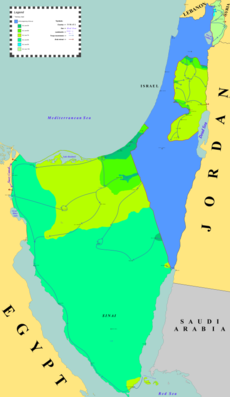
Back قرار مجلس الأمن التابع للأمم المتحدة رقم 242 Arabic BMT Təhlükəsizlik Şurasının 242 saylı qətnaməsi Azerbaijani Резолюция 242 на Съвета за сигурност на ООН Bulgarian Resolució 242 del Consell de Seguretat de les Nacions Unides Catalan بڕیارنامەی ٢٤٢ی ئەنجومەنی ئاسایش CKB Rezoluce Rady bezpečnosti OSN č. 242 Czech FN's Sikkerhedsråds resolution 242 Danish Resolution 242 des UN-Sicherheitsrates German Resolución 242 del Consejo de Seguridad de las Naciones Unidas Spanish قطعنامه ۲۴۲ شورای امنیت Persian
| UN Security Council Resolution 242 | ||
|---|---|---|
 Territories occupied by Israel during the Six-Day War, including the Sinai | ||
| Date | 22 November 1967 | |
| Meeting no. | 1,382 | |
| Code | S/RES/242(1967) (Document) | |
| Subject | Territories occupied by Israel | |
Voting summary |
| |
| Result | Unanimously approved | |
| Security Council composition | ||
Permanent members | ||
Non-permanent members | ||
| ||
United Nations Security Council Resolution 242 (S/RES/242) was adopted unanimously by the UN Security Council on November 22, 1967, in the aftermath of the Six-Day War. It was adopted under Chapter VI of the UN Charter.[1] The resolution was sponsored by British ambassador Lord Caradon and was one of five drafts under consideration.[2]
The preamble refers to the "inadmissibility of the acquisition of territory by war and the need to work for a just and lasting peace in the Middle East in which every State in the area can live in security".[3]
Operative Paragraph One "Affirms that the fulfillment of Charter principles requires the establishment of a just and lasting peace in the Middle East which should include the application of both the following principles:
- (i) Withdrawal of Israeli armed forces from territories occupied in the recent conflict;
- (ii) Termination of all claims or states of belligerency and respect for and acknowledgment of the sovereignty, territorial integrity and political independence of every State in the area and their right to live in peace within secure and recognized boundaries free from threats or acts of force."[4]
Egypt, Jordan, Israel and Lebanon entered into consultations with the UN Special representative over the implementation of 242.[5] After denouncing it in 1967, Syria "conditionally" accepted the resolution in March 1972. Syria formally accepted[6] UN Security Council Resolution 338, the cease-fire at the end of the Yom Kippur War (in 1973), which embraced Resolution 242.[7]
On 1 May 1968, the Israeli ambassador to the UN expressed Israel's position to the Security Council: "My government has indicated its acceptance of the Security Council resolution for the promotion of agreement on the establishment of a just and lasting peace. I am also authorized to reaffirm that we are willing to seek agreement with each Arab State on all matters included in that resolution."
Resolution 242 is one of the most widely affirmed resolutions on the Arab–Israeli conflict and formed the basis for later negotiations between the parties. These led to peace treaties between Israel and Egypt (1979) and Jordan (1994), as well as the 1993 and 1995 agreements with the Palestinians.
- ^ "S/PV.1382 (OR)". Security Council Official Records 22nd Year. United nations. Archived from the original on 2017-10-12. Retrieved 2016-12-27.
- ^ "See "S/PV. 1382 Paragraph 65 for list of drafts. The UK draft was designated S/8247"". un.org. Retrieved 22 March 2018.
- ^ "United Nations Research Guide". United Nations. June 27, 2012. Retrieved June 27, 2012.
- ^ "S/RES/242(1967) – E". undocs.org. Retrieved 2 March 2017.
- ^ "See Security Council Document S/10070 Para 2". un.org. Archived from the original on 12 February 2007. Retrieved 22 March 2018.
- ^ "Syria's acceptance of 338" Archived 2008-03-06 at the Wayback Machine
- ^ Hinnebusch, Raymond A.; Drysdale, Alasdair (1991). Syria and the Middle East Peace Process. New York: Council on Foreign Relations Press. pp. 105, 108. ISBN 978-0-87609-105-0.
0876091052.
© MMXXIII Rich X Search. We shall prevail. All rights reserved. Rich X Search